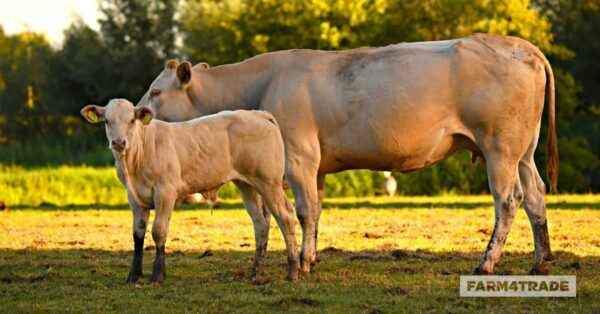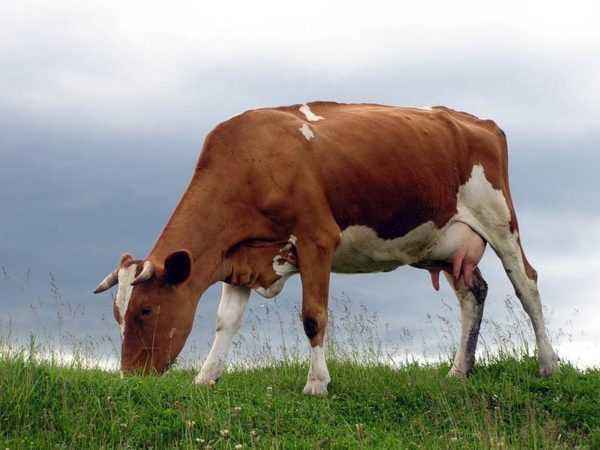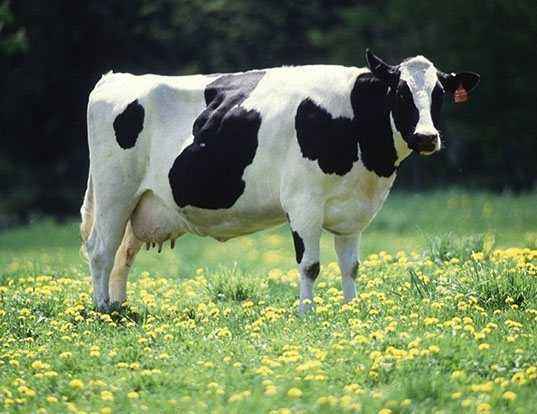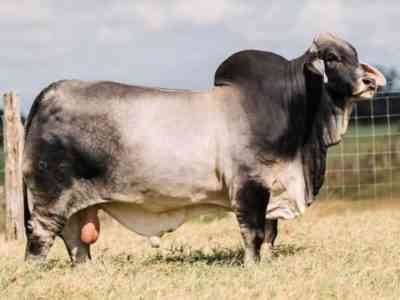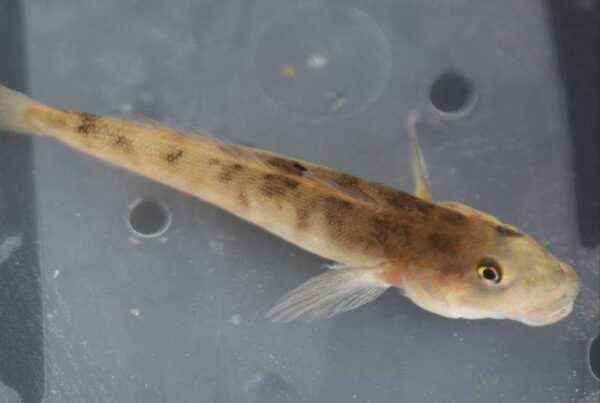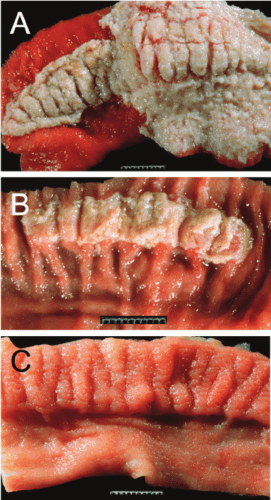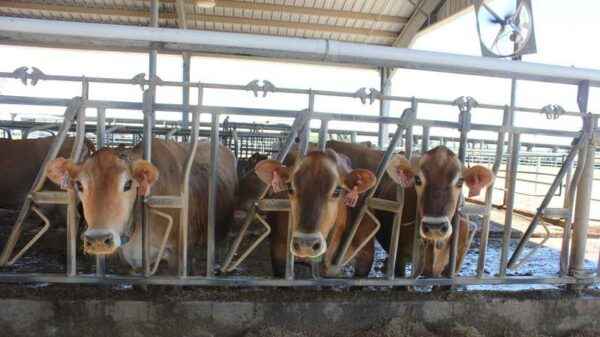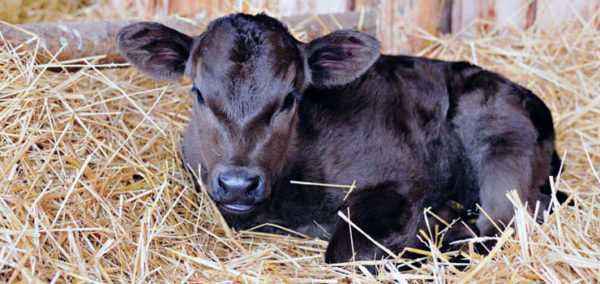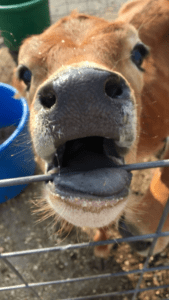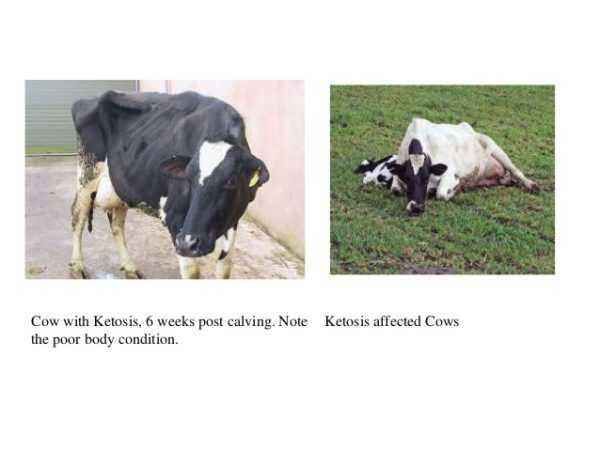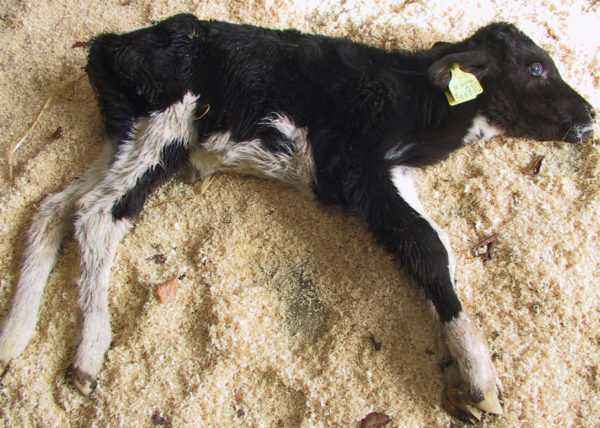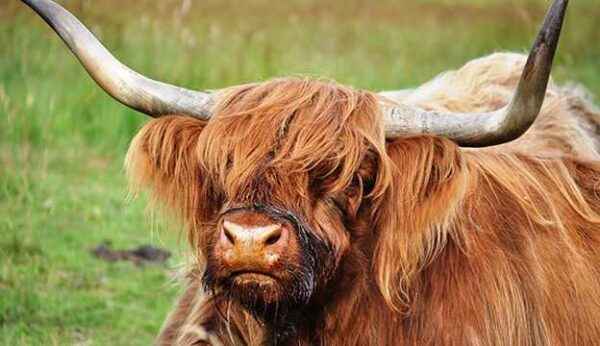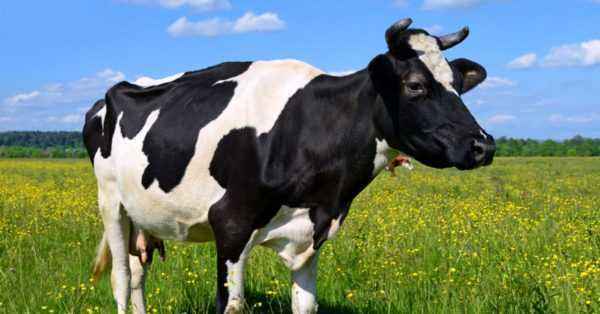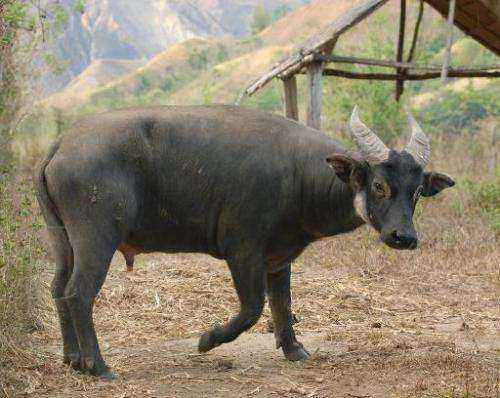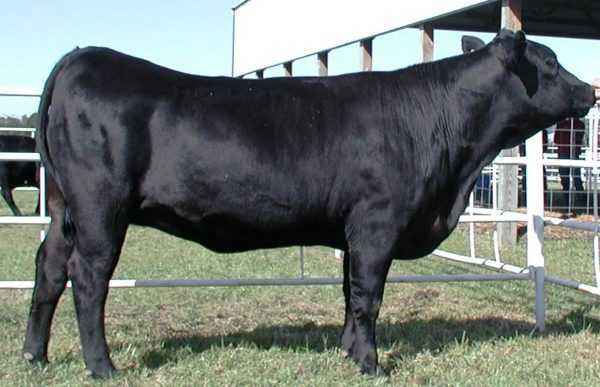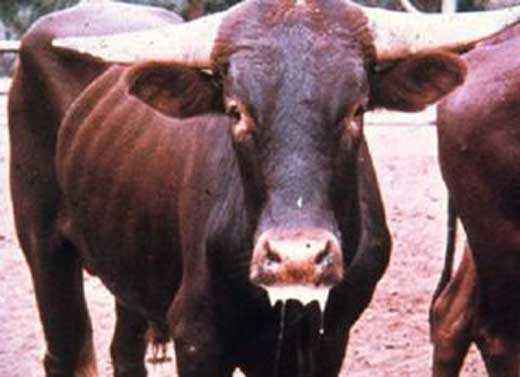Dyspepsia of calves is a rather insidious disease that occurs most often in young animals. First of all, toxic dyspepsia appears because young animals are weaned early from their mother’s milk and transferred to poor feed. Most often, the disease has a mild and toxic form. In the people themselves, farmers themselves call this ailment enzymatic diarrhea, or diarrhea of newborns. According to statistics, such a disease mows about 20% of young animals.The etiology of dyspepsia in calves can be with poor-quality diets, as well as a sharp change in various types of feed.
- Signs of dyspepsia in calves
- Why calves are infected with dyspepsia
- Treatment of young animals
- Prevention of the disease
- Cow’s milk for calves
- Helpful hints

Dyspepsia of calves
Dyspepsia can occur in calves at times New season, but most often – in late winter and early spring. The symptoms of dyspepsia need to be addressed immediately, otherwise it can cover the entire population. If one calf is infected, it should be transferred to a separate paddock and observed. Only in the event of a complete recovery can it be returned back to the general herd.
To protect your livestock, it is necessary to prevent calf dyspepsia. It is carried out regularly even in the absence of signs of the disease.
Signs of dyspepsia in calves
In some cases, dyspepsia in calves is mild, but if you do not start treatment, then the disease can become toxic. Mostly calves become infected in the spring, the disease in this case develops instantly.
- The main symptom is diarrhea. Despite the reasons at the initial stage of the disease, young animals lose their appetite, this is how the simple form manifests itself.
- If the disease is actively developing, then the animals can lie, rumbling is observed in the abdomen. Depending on the stage, there may be intestinal spasm.
- Body temperature varies depending on the condition, but generally decreases.
- If the symptoms indicate toxic dyspepsia, then the deterioration of the animal’s condition is immediately noticeable : the calf does not eat, only lies, diarrhea does not stop. The nose is dry, the body is dehydrated due to diarrhea. The stool may be yellow-gray.
Dyspepsia of calves and their treatment should be carried out at the first suspicion of a disease.
Why calves are infected with dyspepsia
The pathogenesis of the disease may be different. If the calf received milk in an untimely manner, then colostrum can provoke digestive disorders and dysbiosis, and this is, first of all, the beginning of the development of dyspepsia. The etiology is such that the autoimmune origin of the disease can also provoke dyspepsia, while the symptoms are the same. This is due to metabolic disorders in the livestock, and the young stock compensates for the deficiency through autoantibodies. The disease also manifests itself due to the inability of the gastrointestinal tract to digest colostrum in full. Do not give milk from a cow with mastitis.
To feed with colostrum, you need to take it only from a completely healthy individual. During the gestation period, the stock must be shown to the veterinarian to identify any problems at an early stage. In young animals, the digestive organs are not yet so developed, and how well the colostrum or the feed determines how the digestive system begins to process the food received. It is very important not to change the diet until the young growth has grown, and feed only high-quality food. It’s even important how the farmer plans to take young growth away from the cow.
Disorders occur in the body as follows: harmful products form in the intestines that rot, and in the calf they provoke toxicosis, dysbiosis, hence diarrhea, and metabolic disturbance substances. If there is no treatment at this stage of the disease, the calf is dehydrated.
If the form of dyspepsia is simple, then dehydration is not so pronounced, because the calf can compensate for light dehydration on its own if there is quality food and active appetite. The cow should give the required minimum of nutrients.
Thus, the causes of the disease are different, to establish the exact one, you need to show the TV to the veterinarian: only a specialist can make the correct diagnosis.
Treatment of young animals
First of all, treatment should be prescribed by a veterinarian and only in combination therapy. Diarrhea should be relieved by diarrhea medications. It is also necessary to adjust the water-vitamin balance in the body.If the livestock had exhaustion, then with untimely treatment this can lead to dystrophy.
Alimentary dystrophy can occur with frequent diarrhea and a deficiency of nutrient components. Be sure to conduct a course with the replenishment of a lack of vitamins and other elements. Treatment should begin with the regulation of nutrition, as the quality of food is the main reason for provoking dyspepsia. Feeding sick calves should be based on their weight and stage of the disease. On average, you need to give 4-5 servings per day of fresh milk.
Colostrum should not be spoiled, not sour, not cold and not hot. If you give high-quality milk from a dirty bucket, young animals can pick up bacteria.
Colostrum should be given in a dosage of 250-400 ml in half with saline. Milk with saline is given only in the first days of the disease, as soon as the animal begins to feel better, gradually the dosage can be reduced. A couple of days after the start of treatment, you can feed only colostrum. 30 minutes before the start of feeding, the animal is given the medications prescribed by the veterinarian. These are mainly antibiotics and nitrofuran compounds. Such drugs will help to disinfect the gastrointestinal tract and will be effective for dysbiosis that occurs after taking antibiotics.
In order to disinfect the entire body of the animal, you can prepare decoctions of oak bark, sage leaves or horse sorrel.Such drugs with moderate use will benefit the weakened body of the calf. They must be given in combination with vitamins A, C, D.
Without fail during treatment it is necessary to create optimal conditions for animals, weakened individuals need to turn on heating in the room. It is important to ensure that there is a normal circulation of fresh air in the pen. It is also important to maintain cleanliness and sterility when working with an infected calf.
Disease prevention
Calf dyspepsia, their treatment and disease prevention are interconnected. To prevent animals from getting sick, it is necessary to carry out prophylaxis in time, which consists in monitoring the normal metabolism of cows at the stage of gestation. It is imperative that a normal and complete diet be made for cows. The daily menu should include all the necessary vitamins and minerals that are required by a pregnant female.
Giving meager food means endangering not only the cow, but also its future cub. It is very important to monitor the condition of the individuals and periodically invite the veterinarian to conduct tests.
Immediately after the birth of the calf, the first colostrum should enter the body within an hour. If you violate this rule, then a newborn animal may experience diarrhea and even a delay in development. After the birth of the baby, it is very important not to wean him from the mother and feed him at least in the first days after birth.
Cow’s milk for calves
From cow’s milk, calves receive all the necessary nutrients, provided that the cow is fed with natural and high-quality products. The value of cow’s milk cannot be underestimated, since high-quality colostrum directly affects immunity. The stronger it is, the better the youngster tolerates resistance to bacteria and infections. The best way is not to excommunicate the young from the female, since only she can give colostrum to her cub and put it on its feet the first time after birth.
Within 10 days from the moment of birth, young calves are milked up to 6 times per day in special bottles with nipples. They must be completely disinfected before adding milk there. The nipple should be scalded with boiling water or boiled in a saucepan. Do not feed the calves by pouring milk into a bowl or bucket, as hungry young animals begin to clumsyly and eagerly swallow colostrum, as a result of which there is a risk of problems. Milk should only be from a verified individual that has passed a special veterinary check.
If a cow is sick, it is better to first quarantine it before another disease is established.
Dry top dressing can be given little by little so that it does not condense in the rectum. Many farmers practice this method when it is necessary to transfer young animals to a new diet: they give a little 9% saline solution along with new food. According to farmers, it reduces the discomfort of the sensation of another meal.You can give specialized food only taking into account the age of the baby, since such food is designed specifically for the young age of the calf.
Useful tips
First of all, you must follow the rules for the care and animal welfare. If you decide to raise cows, you must equip the barn according to all standards. It is imperative to divide the rooms in the barn so that there are places for individuals with cubs and for those who have contracted a viral infection. When the young growth, it must be placed in a separate paddock, and this should also be taken into account. If these simple rules are not followed, then individuals can become infected with dyspepsia from each other in cramped conditions.
Another tip is that it is important to keep all bedding and equipment clean. When working with animals, gloves should be worn.
It is very important to monitor your herd, as small individuals can eat bedding, and then they will have problems with stools. After each bowel movement, animals clean the floor and walls in the barn with special disinfectants, as bacteria can be present in the feces. Before calving a cow, some farmers even treat the floor with iodine so that future offspring are not infected.
If you follow all the rules for caring and raising the herd, you can get an active and healthy livestock. Prevention of dyspepsia can protect the herd from a serious illness, and the owner – from spending on numerous drugs.

